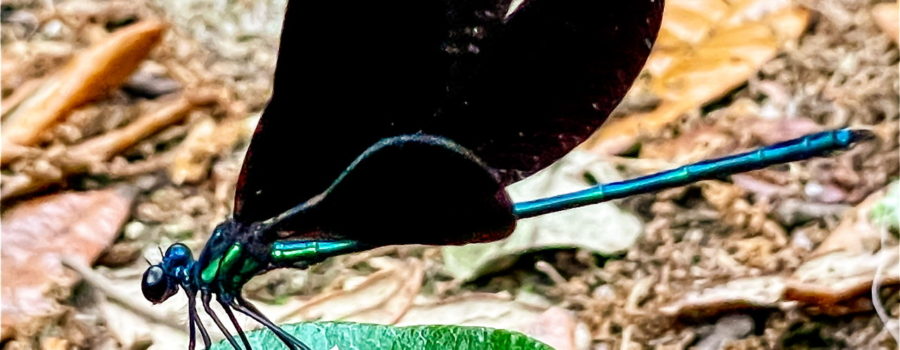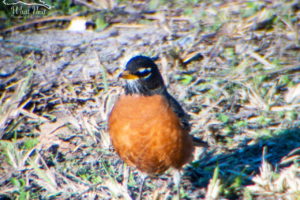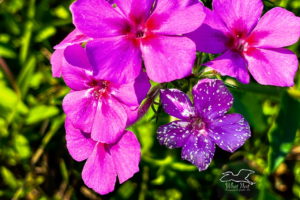The Ebony Jewelwing is a Stunning and Unusual Damselfly

A little while back I came home from work tired and ready to relax on a Friday afternoon, only to be greeted by several great photo opportunites that just couldn’t be ignored. It’s funny how the tiredness melts away when I’m shooting images and watching the interesting behaviors of the wild things that I’m taking pictures of. One of the most interesting animals that I saw that afternoon was a male ebony jewelwing (Calopteryx maculata). Some of you may also know them as black-winged damselflies.

I first noticed the damselfly when I came up the driveway and parked. As I got out of the truck this dark ”butterfly” fluttered across the front porch. At first I thought it was a dark skipper or a very small black swallowtail, but it just didn’t look quite right, so I followed it up onto the porch. When it settled on the railing, I realized it was either a dragonfly or a large damselfly. It was a species that I had never seen before with a gorgeous shiny blue-green body and black wings folded up over it’s back. As I tried to get closer to it, it took off. Several times, I followed it and lost sight of it, but each time it would be back a few minutes later. It became apparent to me that following it wasn’t working to get close enough to get some good shots, so instead, I chose a spot near several of it’s favorite perches and waited. When it landed I scooted on my belly very slowly, and it worked!

After identifying this beautiful damselfly, I realized that it was pretty unusual in a couple of ways. First, it is quite large for a damselfly. Ebony jewelwings measure between 1 1/2 to 2 inches, which is larger than some of the smaller dragonflies. The other unusual thing about them is that they will frequently turn their heads and look directly at you as you approach them. It’s an interesting behavior, but uncommon in insects with compound eyes. Like most damselflies, ebony jewelwings have a finer build than dragonflies with a very long, thin abdomen and they hold their wings folded above them when resting instead of spread like dragonflies do. When they fly, they flap all four wings at once giving them a slow, fluttering flight similar to butterflies (which is why many people besides me have initially mistaken them for butterflies). When mating, though, the males will flap their fore and hind wings separately, which helps them to attract females.

Female ebony jewelwings look similar to males, but instead of being blue-green they are a greenish gold color with slightly lighter wings that have a white stigma (spot) near the tips. After mating, the female will skim the water top and dip the tip of her abdomen into the water near plants like pickerelweed. She will pierce the plant stem or a submerged leaf and lay her eggs. She can lay up to 600 eggs during her relatively short lifespan of about two weeks. When the eggs hatch the larvae or naiads, live an aquatic lifestyle feeding on mosquito larvae, aquatic insects, and just about anything smaller than themselves. They live in the water for a year or so and undergo several molts as they grow. When ready, the naiads crawl out of the water and go through one final molt to become adult damselflies. As adults they feed on small flying insects like mosquitos, gnats, small flies and many other pest species. They are very important in helping to control those populations.

These beautiful damselflies are found in southeastern Canada and the eastern United States. They are usually found in areas with slow moving water like streams, rivers, ponds, and lakes, but it is not unusual to find them a fair distance from water at times (like at my place in the sandhills!). Besides being important for control of pest species, ebony jewelwings also are an important food item for numerous insectivorous birds like robins and bluejays, reptiles such as snapping turtles and leopard frogs, fish, bats, and even larger predatory insects. Like most of nature, these damselflies are part of a well balanced system that should not be disturbed. Fortunately for them, ebony jewelwings (and other damseflies and dragonflies) are usually welcomed and protected by people.






Recent Comments